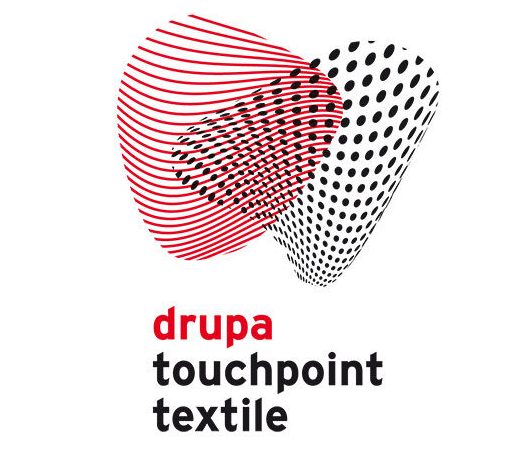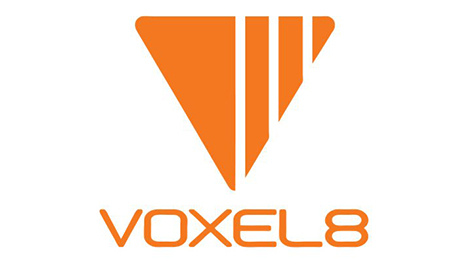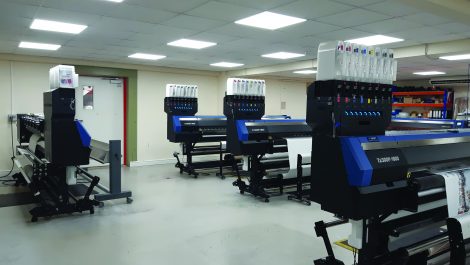In less than two weeks, and for the first time in its history, drupa will take place in a virtual format. It’s the biggest exhibition in the printing calendar and even if we’ve all grown accustomed to online events over the past year, drupa’s reputation will ensure that expectations are high.
As a result of the pandemic the quadrennial exhibition was first postponed, then shortened and, finally, reimagined as a virtual event. Taking place from 20 – 23 April, virtual.drupa is now set to involve exhibitors from around 30 countries, focusing on innovations and future technologies for the global printing community.
It isn’t what anyone was expecting, but the return of drupa in any form is obviously a cause for excitement. The 2021 incarnation will be of particular interest to those involved in textile printing, with event organisers giving the sector its own dedicated special forum, touchpoint textile.
‘The touchpoint textile brings together companies from different industries, offers space for cross-sector cooperation, new projects and product and manufacturing ideas,’ they’ve said. ‘We want to realise this through technologies and partners using the example of a micro factory in a special forum – the touchpoint textile.’
Over the course of the four days there will be an array of expert speakers addressing a series of relevant topics. Highlights will include:
20 April
Dr. Reinhold Schneider of the DITF (German Institute of Textile Technology and Process Engineering) will address Ink development for textile printing.
Dr. Martin Lades and Franziska Moltenbrey, again from the DITF, will then host a 3D fashion product simulation, using virtual reality as a starting point for textile printing in a digital textile microfactory.
21 April
Peter Buttiens, CEO of Esma and consultant Thomas Poetz will provide a Roadmap for textile printing, placing particular focus on the supply chain, sustainability, circular economy, industry 4.0, automation and other demands which arise around the textile world.
The roadmap will also take a look at the emergence of digital textile printing in applications such as soft-signage, apparel, garment, sportswear, home textiles, fast fashion, as well as some new trends.
22 April
Rolf Köppel, segment manager textiles at Zünd Systemtechnik, will explore Cutting automation in the textile industry. Specifics will include a focus on how cutting requirements are changing as digital transformation takes hold and the possibility of integrating cutting in a web-to-print manufacturing process.
DuPont’s Eric Beyeler, Elaine Campling from Chemical Compliance Advisory Services and Dr Outi Tunnela of the European Chemicals Agency will then address the environment with a talk called Make sustainability fashionable, make fashion sustainable.
With Europeans consuming an average 26kg of textiles per person, per year, and 11kg of textiles being discarded per person, per year, their session will explore the steps being taken in Europe to make the textile and fashion industries more sustainable.
Following this, the DITF’s Dr Jürgen Seibold will explain how to set-up a model for a digital textile microfactory using Method Material Flow Cost Accounting (MFCA) in a session entitled Transparent and sustainable production within digital textile microfactories.
Finally, the day will conclude with a panel discussion exploring Digital textile micro factory.
23 April
The last day of virtual.drupa will see LMNS’ Roland Biemans, Sebastian Hanssens of Caldera, Augusta Silva from CITEVE and Meteor Inkjet’s Jonathan Wilson investigate the Transition of textile printing. The quartet will discuss the ‘sweeping implications for print-on-demand, stock management and bringing production closer to the customer.’
This will be followed by Micol Gamba, product and marketing manager for EFI Reggiani. Ms Gamba will look at The edge of textile printing technology, taking her audience on a journey through the most recent innovations in textile printing.
Brecht Demedts, a researcher at Centexbel, will then expand on Water-based, bio based and biodegradable inks for textiles.
Then, last but very much not least, Dieter Stellmach will conclude touchpoint textile by speaking on Circular textile value creation by networking digital textile microfactories. The presentation will explain how digital textile printing as one core process for textile value creation is embedded into a digital textile microfactory.





